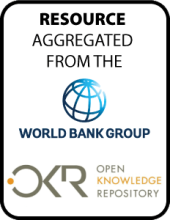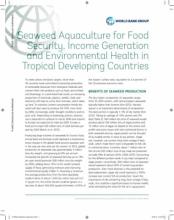Land Library
Welcome to the Land Portal Library. Explore our vast collection of open-access resources (over 74,000) including reports, journal articles, research papers, peer-reviewed publications, legal documents, videos and much more.
/ library resources
Showing items 1 through 9 of 127.This report was drafted by a working group of United Nations entities, the World Bank, and other stakeholders to suggest a common understanding of the blue economy; to highlight the importance of such an approach, particularly for small island developing states and coastal least developed countri
Coastal grab refers to the contested appropriation of coastal (shore and inshore) space and resources by outside interests. This paper explores the phenomenon of coastal grabbing and the effects of such appropriation on community-based conservation of local resources and environment.
This paper investigates possible impacts
of climate change on the poor communities of the Bangladesh
Sundarbans via changes in aquatic salinity and mangrove
species. The implications for poor communities are assessed
To meet carbon emissions targets, more than 30 countries have committed to boosting production of renewable resources from biological materials andconvert them into products such as food, animal feedand bioenergy.
Coastal erosion is a naturally occurring
process that is accelerated by human impacts. Artificial
stabilization of the shoreline, the deterioration of natural
formations, the construction of infrastructure, the
Fisheries constitute an important source
of livelihoods for tens of thousands of poor people in the
southwest coastal region of Bangladesh living near the
UNESCO Heritage Sundarbans mangrove forest, and they supply
This report was prepared by the World Bank in partnership with the Livelihoods and Food Security Multi-Donor Trust Fund (LIFT).
The main objective of this Economic and Sector Work (ESW) is to identify opportunities for stronger linkages between domestic agricultural supply chains and the tourism sector in the OECS, and to outline priority interventions with potential to strengthen these linkages.
This report is comprised of two volumes:
(i) volume one: risk assessment; and (ii) volume two: risk
management strategy. Volume one continues with chapter one,
which characterizes the recent performance of the





